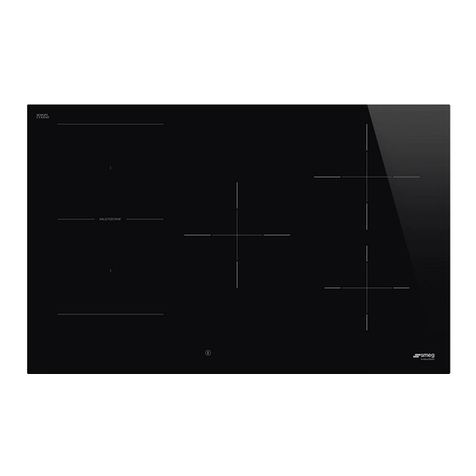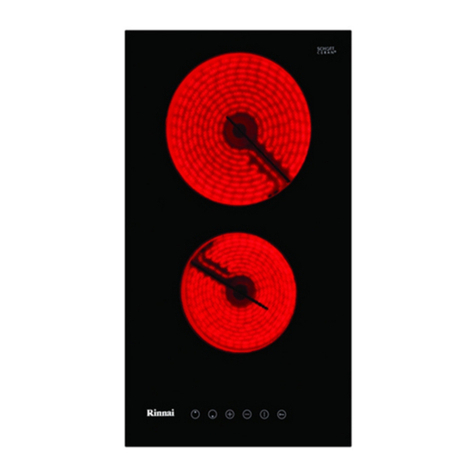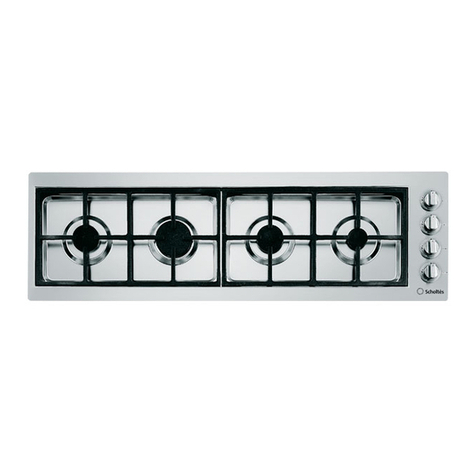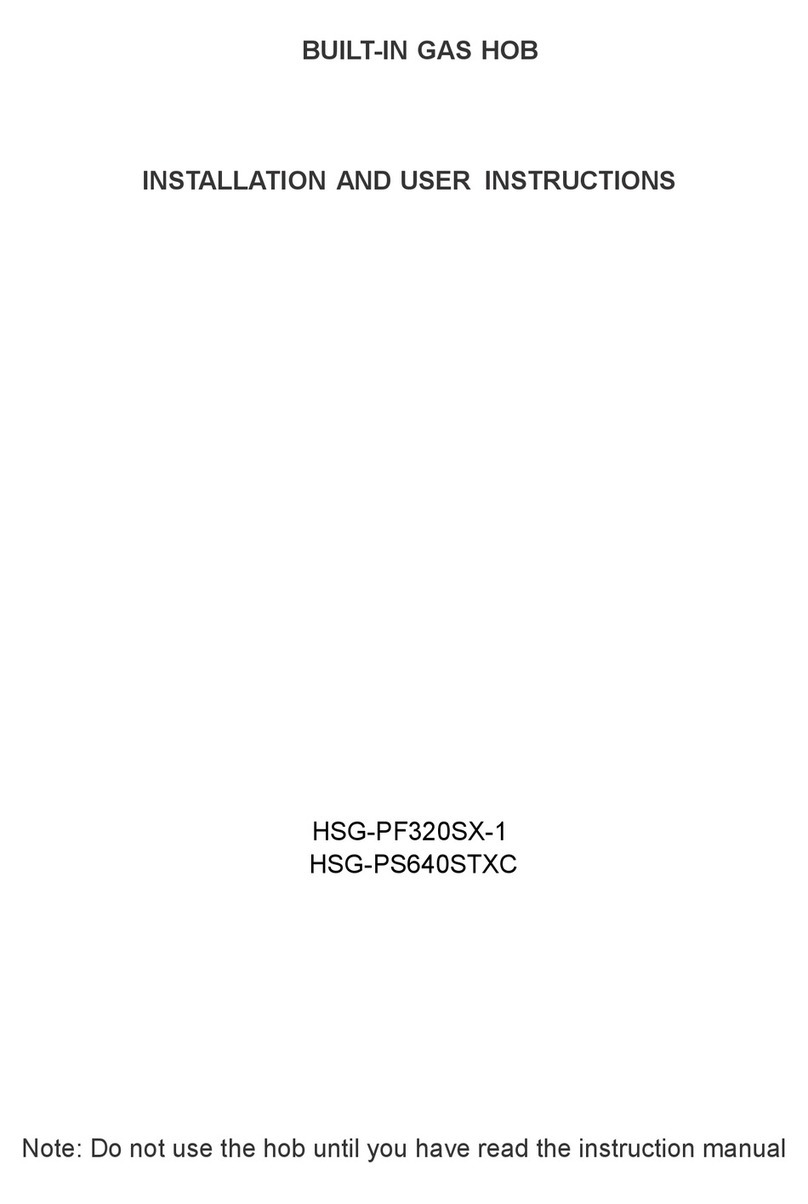glemgas GT955HIX User manual

I
I
IN
N
NS
S
ST
T
TR
R
RU
U
UC
C
CT
T
TI
I
IO
O
ON
N
N
B
B
BO
O
OO
O
OK
K
KL
L
LE
E
ET
T
T
BUILT-IN HOB


Important warning and advice for usage
IMPORTANT! This booklet is a fundamental part of the appliance it should be
preserved whole and at hand throughout the hob’s lifespan. We recommend that this
booklet and all the instructions within it are read carefully before using the appliance.
Keep the spare parts supplied in a safe place. The appliance is to be installed by
qualified personnel respecting the norms in force. This appliance is for domestic use
and has been built to carry out the following functions: cooking and heating food. Any
other use is considered improper.
The manufacturer is not responsible for bad installation, tampering, unskilled use and usage other
than that it is intended for.
♦Check that the product has not been damaged during transport.
♦Packing elements (plastic bags, expanded polystyrene, nylon etc) are potentially dangerous and must be
kept away from children.
♦Packing is made up of recyclable material and is marked by the symbol. Do not on dispose of it in
the environment.
♦This appliance is only to be used by adults. Make sure the children do not touch the commands or play
with the appliance.
♦Installation and all gas/electric connections must be carried out by qualified personnel, fully respecting the
safety norms and laws in force, on the basis of the instructions supplied by the manufacturer.
♦Electrics are only safe when the product is connected to an efficient earthing system.
♦It is risky to modify or try to modify the appliance. In the case of faults, do not attempt reparation but ask for
assistance from a qualified technician.
♦Having used the hob, make sure that the knob indicator is on the off position and turn off the main gas
distribution valve or the cylinder valve.
♦If you decide not to use this appliance it must rendered unusable according to health and environmental
protection laws before being taken to the recyclable waste disposal; the parts that may be dangerous to
children must be made
♦The identification plate with its technical data is in a visible position under the housing and attached to this
booklet. The plate under the housing must never be removed.
♦The illustrations for using the appliance are in the final pages of this booklet.
Declaration of conformity
This appliance conforms to the following CE directives
−90/396/CEE “Gas apparatus”
−73/23/CEE “Low voltage”
−89/336/CEE “Electromagnetic compatibility”
−93/68/CEE “General Norms”
−89/109/CEE “Materials or objects that can come into contact with foodstuffs”
GLASS COVER
If the appliance has a glass cover, please take the following precautions:
♦Do not place hot pots on the cover when it is closed.
♦Remove any liquid that has spilt onto it before opening it.
♦It could break if heated. Turn all the burners and the electric plates off and wait for them to cool before
lowering the cover.
These instructions are onl
y
valid for destination countries with
the identification symbols shown in the booklet and on the
appliance.
1

HOB CHARACTERISTICS
Warning:
This appliance is the type for being built into furniture.
♦The installation class is 3 for the gas parts and Y for the electric parts.
♦Furniture must be resistant to temperatures of at least 90°C.
♦See the relative paragraph and drawings for correct installation.
♦Using a gas cooking appliance causes heat and humidity in the location where it is installed. Make sure that
the kitchen is aired properly: keep natural aeration orifices open or install a mechanical aeration device
(ventilation hood). Intensive and long use of the appliance will need further aeration, opening a window for
example, or more efficient aeration such as increasing the hood speed.
This booklet is suitable for various hobs. You can see your model (Mod. Tc) on the plate. You will see how
your appliance is made up from its model number, the instructions in the following paragraph and the figures at
the back of the booklet (Fig1 to 26)
Example:
Marchio
T y p e : P......
MODELS
60cm hob with front commands
Mod: P6S (**) F4 (Fig. 1)
1. Semi-rapid front burner (SR)
2. Semi-rapid back burner (SR)
3. Rapid burner (R)
4. Auxiliary burner (A)
Mod: P6 (**) F2 (Fig. 2)
1. Semi-rapid front burner (SR)
2. Semi-rapid back burner (SR)
3. Auxiliary burner(A
4. Triple-crown burner / TC)
Mod: P6 (**) F1 (Fig. .3)
1. Semi-rapid front burner (SR)
2. Electric plate ø 145
3. Rapid burner(R)
4. Auxiliary burner(A)
Mod: P6 (**) FY (Fig. 4)
1. Auxiliary burner(A)
2. Triple-crown burner (TC)
3. Semi-rapid back burner (SR)
4. Semi-rapid left burner(SR)
70cm hob with front commands
Mod: P7 (**) F5 (Fig. 5)
1. Auxiliary burner(A)
2. Rapid burner(R)
3. Semi-rapid back burner (SR)
4. Semi-rapid front burner (SR)
5. Triple-crown burner (TC)
Mod: P7 (**) F4 (Fig. 6)
1. Auxiliary burner(A)
2. Rapid burner(R)
3. Semi-rapid back burner (SR)
4. Semi-rapid front burner (SR)
Mod: P7 (**) F3 (Fig. 7)
1. Triple-crown burner (TC)
2. Semi-rapid back burner (SR)
3. Auxiliary burner(A)
2

75cm hob with front commands
Mod: P8 (**) F5 (Fig. 8)
1. Auxiliary burner(A)
2. Rapid burner(R)
3. Semi-rapid back burner (SR)
4. Semi-rapid front burner (SR)
5. DUAL burner (DUAL)
Mod: P8 (**) F5 (Fig. 9)
1. Auxiliary burner(A)
2. Semi-rapid back burner (SR)
3. Rapid burner(R)
4. Semi-rapid front burner (SR)
5. DUAL burner (DUAL)
Mod: P8 (**) FU (Fig. 10)
1. Triple-crown burner (TC)
2. Semi-rapid back burner (SR)
3. DUAL burner (DUAL)
4. Auxiliary burner(A)
90cm hob with front commands
Mod: P9(**)F16 (Fig.11)
1. Auxiliary burner (A)
2. Rapid burner ( R )
3. Semi-rapid back burner (SR)
4. Semi-rapid front burner (SR)
5. Triple-crown burner (TC)
Mod: P9(**)F-N (fig. 12)
1. Auxiliary burner (A)
2. Rapid left back burner ( R )
3. Semi-rapid back burner (SR)
4. Semi-rapid right front burner (SR)
5. Semi-rapid central front burner (SR)
6. Rapid central back burner ( R )
Mod: P9(**)F20 (Fig. 13)
1. DUAL burner (DUAL)
2. Semi-rapid back burner (SR)
3. Rapid burner ( R )
4. Semi-rapid front burner (SR)
5. liary burner (A)
Mod: P9(**)F-T (Fig. 14)
1. Triple-crown burner (TC)
2. Auxiliary burner (A)
3. Semi-rapid back burner (SR)
4. Semi-rapid front burner (SR)
Mod: P9(**)F22 (Fig. 15)
1. Triple-crown burner (TC)
2. BruciaAuxiliary burner(A)
3. Semi-rapid back burner (SR)
4. Semi-rapid front burner (SR)
5. Fish Kettle burner (P)
Mod: P9(**)F13 (Fig. 16)
1. Triple-crown burner (TC)
2. Semi-rapid burner (SR)
3. BruciatoAuxiliary burner(A)
Mod: P9(**)F24 (Fig. 17)
1. Triple-crown burner (TC)
2. Auxiliary burner (A)
3. DUAL burner (DUAL)
Mod: P9(**)F26 (Fig. 18)
1. Triple-crown burner (TC)
2. Electric plate ø 145
3. DUAL burner (DUAL)
Mod: P9(**)F25 (Fig.19)
1. Triple-crown burner (TC)
2. Fish Kettle burner (P)
3. DUAL burner (DUAL)
3

90cm hob with side
commands
Mod: P9(**)L-5 (Fig.20)
1. Auxiliary burner (A)
2. Rapid burner ( R )
3. Semi-rapid left back burner (SR)
4. Semi-rapid right front burner (SR)
5. Triple-crown burner (TC)
Mod: P9(**)L28 (Fig.21)
1. Auxiliary burner (A)
2. Rapid burner ( R )
3. Semi-rapid left back burner (SR)
4. Semi-rapid right front burner (SR)
5. Triple-crown burner (TC)
6. Electric plate ø 145
Mod: P9(**)L-B (Fig.22)
1. Auxiliary burner (A)
2. Fish Kettle burner (P)
3. Semi-rapid left back burner (SR)
4. Semi-rapid right front burner (SR)
5. Triple-crown burner (TC)
Mod: P9(**)L23 (Fig.23)
1. Auxiliary burner (A)
2. Fish Kettle burner (P)
3. Semi-rapid left back burner (SR)
4. Semi-rapid right front burner (SR)
5. DUAL burner (DUAL)
Mod: P9(**)L-C (Fig.24)
1. Auxiliary burner (A)
2. Electric plate ø 180
3. Semi-rapid left back burner (SR)
4. Semi-rapid right front burner (SR)
5. Rapid burner ( R )
6. Electric plate ø 145
Mod: P9(**)L-7 (Fig.25)
1. Auxiliary burner (A)
2. Electric plate ø 145
3. Semi-rapid left back burner (SR)
4. Semi-rapid right front burner (SR)
5. Rapid burner ( R )
Mod: P9(**)L27 (Fig.26)
1. Auxiliary burner (A)
2. Electric plate ø 180
3. Semi-rapid left back burner (SR)
4. Semi-rapid right front burner (SR)
5. Rapid burner ( R )
4

USING THE HOB
Gas burners
The flow of gas to the burners is regulated by the knobs shown in 30 which command the valves. Depending on
the chosen version, the symbols can be printed onto the knobs or the command panel. The following
regulations are obtained when the indicator points to the printed symbols:
Valve closed, no gas flow
Maximum capacity, maximum gas flow
Minimum capacity, minimum gas flow
Switching on the burners
- Burners without safety valves
To turn on burners without electric ignition, or when there is no electrical power in models with ignition, place a
flame near to the upper part of the burner, press and turn the knob anti-clockwise so that it points to the
symbol with the reference on the panel.
Turn the knob to the small flame for minimum capacity.
All working positions must be chosen between the maximum and minimum and never the maximum and
switch-off point.
To turn the burner off, turn the knob clockwise until it reaches position
“valve closed”
- Burners with electric ignition
¾Models with ignition button
To switch on one of the burners, press the ignition button and turn the knob to the maximum flow button
( symbol ). Hold the ignition button down until it lights and then adjust the flame by turning the knob until the
desired flame is obtained.
¾Models with ignition incorporated into the knob
These models are identified with the symbol near to the symbol (maximum flow).
To light one or more burners, press and turn the knob to maximum flow and hold it down until the bunr7s is7are
lit; turn the knob until the desired flame is obtained.
Note:
If it is difficult to light the burner with the knob in the maximum position because of local gas flow, we
recommend repeating the operation with the knob on minimum before placing a vessel on the ring.
- Burners with safety valves
Some models have safety valves which automatically interrupts gas flow should the burner switch itself off for
any reason.
Turn the knob to the and repeat the lighting operations explained in the following paragraphs to restore
functionality.
¾Using the burner
According to the type of electric ignition, proceed as follows:
)For models with ignition incorporated in the knob, turn the gas valve knob to maximum flow and then press
and hold it down for about 4 to 5 seconds. Release the knob and adjust he flame by turning the knob until it
reaches the desired intensity.
5

)Warning:
The ignition device cannot be activated for more than 15 seconds.
If it still has not lit after this time or it turned off accidentally, wait for 1 minute before repeating the
operation.
)For models with ignition button, turn the gas valve knob to maximum flow and then press the ignition button
and hold it down for about 4 to 5 seconds. Release the knob and adjust he flame by turning the knob until it
reaches the desired intensity.
Using the ring
Hob grids were designed to make the product easy and safe to use. We recommend checking their exact
position and stability on the hob before each use. Furthermore, check that the supporting rubbers are integral
and correctly positioned.
Gird for small vessels (Fig. 27)
Only use the auxiliary burner ring (the smallest) for vessels with a small diameter to prevent them for tipping.
Special ring for WOKs (Fig. 28 optional)
Only use the triple crown ring for WOKs (concave bases). In order to avoid serious burner malfunction, we
recommend not using woks without this special ring and not to use it for flat-based pans
Choosing the burner
The symbology printed on the panel (diagram fig. 29) to the side of the knob indicated the correspondence
between the knob and the burner. Choosing the most adapt burner depends on the vessels’ diameter and
capacity (see table).
It is important that the pan’s diameter is adequate to the burner power not to compromise high yield.
Pan diameter
Burner Minimum diameter Maximum diameter
Auxiliary 60 mm (with
reduction) 140 mm
Semi-rapid 160 mm 200 mm
Rapid 200 mm 240 mm
Triple crown 240 mm 260 mm
Dual 240 mm 260 mm
Fish pan Maximum dimensions: 140X350 mm
Electric plates
Switching on the plate
The electric plate is switched on by turning the knob to the position desired.
Depending on whether the hob has a switch or energy regulator numbers 1 to 6 or from 1 to 11 (fig. 30) indicate
the functioning positions with increasing temperatures (see table).
A light on the control panel is lit when the electric plate is working.
Never cook food direclty on electric plates but in proper
pans or vessels
6

Using the electric plate
Once boiling point is reached, adjust the power based on heating intensity desired, bearing in mind that the
plate will continue to emit heat for some minutes after being turned off.
When using the electric plate it is important to remember:
)It is crucial not to use it without vessels. If the plate is used with nothing on it, it can cause fires,
especially if used like this for some time.
)Do not pour liquids on the plates when they are hot.
)Only use flat-based pans with a diameter that covers the whole surface of the plate.
Knob position Type of Cooking
0 0
Off
1
2
1
2 For melting (butter or chocolate)
2
2
3
4
For keeping food hot and heating small
amounts of food
3
4
5
6
Heating larger quantities, whipping cream and
sauces
4 7
8
Slow boiling, for soup, pasta, risotto,
continuation steam cooking, steak and
general frying
4
5
8
9
10
Reddening meat, roast potatoes, fried fish and
for boiling large amounts of water
6 11
12 Fast frying, grilled steak etc.
Plate type
The hob can have a normal or fast plate. The normal plate is completely black whereas the fast one has a red
centre. Consult section “Characteristics of the plate – Cooking Point” for technical characteristics.
The fast plate differs from the normal one basically because:
)It has higher power.
)It reaches the desired temperature more rapidly.
Glass-ceramic hob.
The glass-ceramic hob has the feature of allowing rapid heat transmission vertically from the heating elements
located under the surface to the pans placed upon it.
The heat is not propagated horizontally so the glass remains “cold” up to just a few centimetres from the
cooking area.
The cooking areas are commanded by a 7-position switch or by a continuous eleven position energy regulator
as shown in figure 30.
Heating intensity in these areas is adjusted increasing from “0” (off) to “6” or “11” (max).
When the hob is operational, the signalling light is lit.
When the temperature in the cooking zone is higher than 70°C the corresponding “remaining heat” light goes
on, indicating that the area is hot.
This light remains on after the cooking zone is turned off to signal that the zone is still hot.
Remaining heat continues some time after the cooking zone is switched off.
During this time the cooking area must not be touched; most of all, pay attention to children.
The light automatically switches off when the temperature in this area lowers to under 70°C.
7

Advice for using the hob safely
)Before switching on, identify which knob controls the desired cooking area.
)We recommend placing the vessel on the cooking zone before switching on and to remove it after turning
off.
)Use vessels with even, flat bases mind cast-iron vessels. Uneven bases can scratch the surface of the
glass-ceramic. Make sure that the base is clean and dry.
)Do not use the hob if the surface is broken or damaged.
)Remember that the cooking area remains hot for some time (about 30 minutes) after switch-off.
)Do not let heavy or sharp objects drop onto the glass-ceramic.
)As soon as you notice a crack on the hob, remove the power supply and call the Assistance Centre.
)Do not point intense halogen lamps onto the hob.
)Never cook food directly on the glass-ceramic hob, but in proper cooking vessels.
Types of cooking areas
“3” circuit radiating area
The heating element is made up of 3 electric resistances which can work together or separately depending on
the seven-position switch or the 0-11 energy regulator.
“Hi-light” radiating zone
The heating element is made up of a coiled band resistance which reaches working temperature very quickly.
A continuous energy regulator commands this working area.
Halogen zone
The heating element is made up of 2 halogen lamps and an electric resistance.
It instantaneously reaches the working temperature.
This is also controlled by a continuous energy regulator.
INSTALLATION INSTRUCTIONS
Important!
The instructions are for a qualified installer.
The appliance must be installed correctly, conforming to the laws in force.
Remove the electrical power supply before intervening on the appliance.
Installation on the top (furniture plane)
The cooking hob can be installed on fittings as long as they are heat-resistant (minimum temperature 90°C)
The size of the hole to be drilled into the furniture plane and the minimum distance between the back, side and
overhead upper walls are shown in figures 31,32, 33, 34,35 and 36.
Note that:
)When the hob is installed without the oven in pair a separation panel is obligatory between the hob base
and the furniture underneath at a distance of at least 10 mm.
)When the hob/oven are a pair, interpose a divider at a minimum distance of 15mm and following the oven
supplier’s instructions maintaining aeration as specified in fig.41. In any case, electrical connection of the
two apparati must be carried out separately, both for electrical reasons and to facilitate extraction.
8

We recommend the use of an oven equipped with forced internal cooling.
Fixing the hob
The hob is to be fixed to the furniture as follows:
)Place the sealing gasket supplied along the outside edge of the hole drilled in the fittings following the
scheme indicated in fig. 37 so that the ends of the strips are perfectly joined without overlapping.
)Position the hob into the hole in the fittings making sure it is centered.
)Attach the hob to the fittings with the supplied mounts as shown in fig. 38.
When the sealing gasket is correctly installed, it is an absolute guarantee against infiltration of liquids.
Place of installation and discharge of combustion products.
)The appliance must be installed and operational in the best possible location and in any case
according to the laws in force.
The installer must refer to the laws in force concerning ventilation and evacuation of combustion
products.
We would remind you that the air necessary for combustion is 2m
3
/h for every kW of power (gas)
installed.
Place of installation
The place where the gas appliance is installed requires a natural air flow necessary for gas combustion (norms
UNI-CIG 7129 e 7131)
The air flow must come directly from one or more openings made on a free area of at least 100 cm2 (A). If the
appliance does not have a safety valve, this opening should have a minimum area of at least 200 cm2(fig. 40).
The opening should be built so that it will not be blocked internally or externally and it is near to the floor,
preferably on the opposite side from the evacuation of combustion products.
If the required openings cannot be made, the necessary air can come from an adjacent room which is ventilated
as required as long as this room is not a bedroom, a dangerous area or under vacuum (UNI-CIG 7129).
Discharging combustion products
As appliances must discharge combustion products through ventilation hoods directly connected to the chimney
flue or to the outside (fig. 40).
If a hood cannot be installed, an electro-ventilator must be used which is applied to an external wall or to the
window in the room.
The electro-ventilator must have a capacity which ensures that the air in the kitchen is exchanged at least 3 to 5
times its volume (UNI-CIG 7129).
Components illustrated in fig. 40
A: Opening for air entry
C: hood for evacuating combustion products
E: Electro-ventilator for evacuating combustion products.
Connection to the gas plant
)Before installation, make sure that the local distribution conditions (gas nature and pressure) and
the hob adjustments are compatible. To do this, check the data on the product plate on the hob and
on this booklet.
Gas connection must be carried out in conformity with norms UNI-CIG 7129 e 7131. The hob must be
connected to the gas plant using rigid metallic pipes or continuous wall flexible stainless steel pipes which
conform to norm UNI-CIG 9891 with a maximum extension of 2 m.
Make sure that when using flexible pipes, these do not come into contact with moving or flattened parts.
9

Carry out the connection so that the appliance is not subjected to stress in any way.
The incoming gas connection pipe is threaded G½”.
No sealing is necessary for ISO R7 connections.
The supplied head washer is to be interposed with ISO R228 connections.
)After connection, check that the connections hold using a soapy solution.
Connection to the mains
The apparatus must be connected to the mains checking that the voltage matches the value shown on the
characteristics plate and that the plant cable section can sustain the load also indicated on the plate.
Should the appliance be directly connected to the mains, an omni-polar switch, with a minimum opening of 3mm
between contacts, of the right size for the load and responding to the pertinent norms has to be interposed
between the appliance and the mains.
)Do not use reducers, adapters or deviators for mains connection as they could overheat and burn.
)Earthing the appliance is obligatory. The manufacturer will not be responsible for the non-
observance of this norm.
If the power supply cable is to be substituted, use a cable with the same characteristics as that supplied,
adapted to load and temperature (type T90°C) it must be requested from assistance. It is also necessary that
the end on the appliance side has a Yellow-Green earth wire 20mm longer than the others.
Consult the table below for the power supply cable dimensions
ADAPTATION TO DIFFERENT TYPES OF GAS
Should the hob need to be adapted to a gas different to the one it was intended for, the injectors have to be
replaced.
It there are no spare injectors supplied they can be obtained from Assistance.
The injectors are to be chosen according to the injector table.
Injectors can be identified by diameter expressed in hundredths of mm printed on the injector itself.
Replacing the injectors
Remove the gas rings and burner caps from the hob.
Using a face spanner, replace injectors “J” (fig. 42) with those ideal for the gas to be used.
Remount the burners.
The burners do not require primary air regulation
Regulating the minimum
Having replaced the injectors, switch on the burner and remove the knob. Place the valve on minimum, insert a
screw into the rod: screw to decrease the flame, unscrew to increase it (fig. 42)
Completely screw the adjuster screw for G30/G31 gas
In any case the result should be a small homogeneous flame which is even all around the burner crown.
Finally, check that the flame does not go off when rapidly turning the valve from maximum to minimum. With
safety burners, check that the flame slightly brushes the thermoelectric couple. Check correct regulation by
leaving the burner on for a few minutes. If it goes off, increase the minimum.
Hob type Dimensions
Only with gas burners 3X0,50 mm2
With one 1000W electric plate 3 X 0,75 mm2
With one 1500W electric plate and two electric plates 3 X 1,5 mm2
10

CLEANING
To preserve the hob well it needs to be cleaned regularly after every use, when it has cooled down.
Never remove the knobs from their housing
Enamel parts
All enamel parts should only be washed with a sponge and soapy water or other specifically non-abrasive
products. Dry completely.
Steel plane
The stainless steel plane should be cleaned with a damp cloth and specific products that are found in shops.
After rinsing, dry with a chamois leather if possible.
Gas rings
The hob’s enamel gas rings were designed to be washed also in dishwashers.
Stainless steel rings can turn blueish in the burner area because of the heat. Common sponges for steel can be
used to decrease this effect.
Burners
The burners are made up of two pieces and can be removed and cleaned with suitable products. After cleaning
they must be completely dry and replaced exactly into their housings.
Models with electrical ignition: make sure that electrode “E” (fig. 44) is always clean.
Models with safety devices: clean probe “T” (fig. 44) so that the safety valve works properly. The electrode and
the probe must be cleaned carefully.
Afterwards, replace the burners precisely into their housings.
To avoid damaging the electric ignition, avoid using it when the burners are not in place.
Electric plates
The electric plates should be cleaned when they are still warm.
Clean with a damp cloth and finish off with a cloth dipped in mineral oil.
The apparati do not need particular maintenance, all the same we recommend a full check at least once every
two years.
Should the knob rotation become hard or there is a smell of as, close the general valve and call technical
assistance.
The faulty valve should be replaced together with its gasket.
11

Cat.: II 2H 3+ IT GB ES PT CH IE
Tipo di gas/ gas type/ type de gaz/ tipo de gas/ tipo de gás/ gaz type G20
Pressione del gas/ gas pressure/ pression gaz/ presion gas/ pressão gas 20 mbar
Bruciatori/ burners/ bruleurs/
quemodores/ bocas de gás/
branders
Portata/power inputs/débit
gas/capacidad/vazão /debiet
Max (kW)
Portata/power inputs/débit
gas/capacidad/vazão /debiet
Min (kW)
Ø
Iniettore/injectors/injecteur/
inyector/injector/sproeier
A 1.00 0.30 0.72
SR 1.75 0.44 0.97
R 3.00 0.75 1.15
TC 3.30 1.50 1.24
TC 3.80 1.50 1.35
P/F 2.90 1.50 1.20
In out
TC 4,5 4.30 0.30
0.66 1.00
Tipo di gas/ gas type/ type de gaz/ tipo de gas/ tipo de gás/ gaz type G30/G31
Pressione del gas/ gas pressure/ pression gaz/ presion gas/ pressão gas 28-30/37 mbar
Bruciatori/ burners/ bruleurs/
quemodores/ bocas de gás/
branders
Portata/power inputs/débit
gas/capacidad/vazão /debiet
Max (kW)
Portata/power inputs/débit
gas/capacidad/vazão /debiet
Min (kW)
Ø
Iniettore/injectors/injecteur/
inyector/injector/sproeier
A 1.00 0.30 0.50
SR 1.75 0.44 0.65
R 3.00 0.75 0.85
TC 3.30 1.50 0.91
TC 3.80 1.50 0.98
P/F 2.90 1.50 0.85
In out
TC 4,5 4.30 0.30
0.46 0.64
12

Fig. 1
1
2
3
4
Fig. 2
1
2
3
4
Fig. 3
1
2
3
4
Fig. 4
12
34
Fig. 5
4
3
2
1 5
Fig. 6
4
3
2
1
Fig. 7
3
2
1
Fig. 8
4
3
2
15
13

Fig. 9 Fig. 10
4
3
2
1
5
1
2
3
4
Fig. 11
4
3
2
1
5
Fig. 12
4
3
2
1
5
6
Fig. 13
4
3
2
1
5
Fig. 14
4
3
2
1
Fig. 15
4
3
2
1
5
Fig. 16
3
2
1
14

Fig. 17
3
2
1
Fig. 18
3
2
1
Fig. 19
3
2
1
15

Fig. 20
4
3
2
1
5
Fig. 21
4
3
5
1
2
6
Fig. 22
4
3
5
1
2
Fig. 23
4
3
5
1
2
Fig. 24
4
3
5
1
2
6
Fig. 25
4
3
5
1
2
Fig. 26
4
3
5
1
2
16

Fig. 27 Fig. 28
Fig. 29
Fig. 30
17

Fig. 31 Fig. 32
Fig. 33 Fig. 34
Fig. 35 Fig. 36
18
This manual suits for next models
2
Table of contents
Other glemgas Hob manuals
Popular Hob manuals by other brands
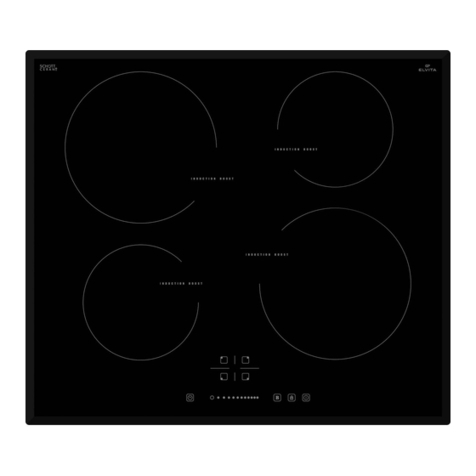
elvita
elvita CIH4661S user manual

Electrolux
Electrolux EHG 9320 Service manual

Logik
Logik LCHOBTC14 Service manual

Electrolux
Electrolux CC 4000 Operating and assembly instructions
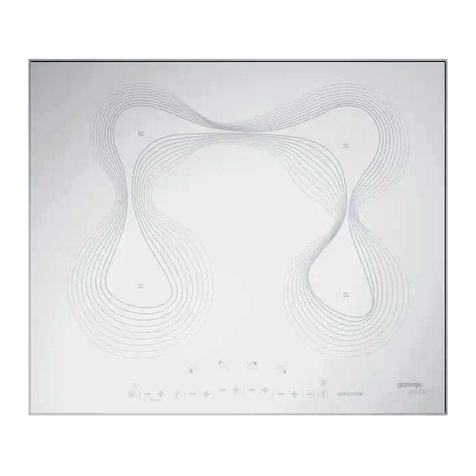
Gorenje
Gorenje IT641KR Instructions for use, installation, and connection
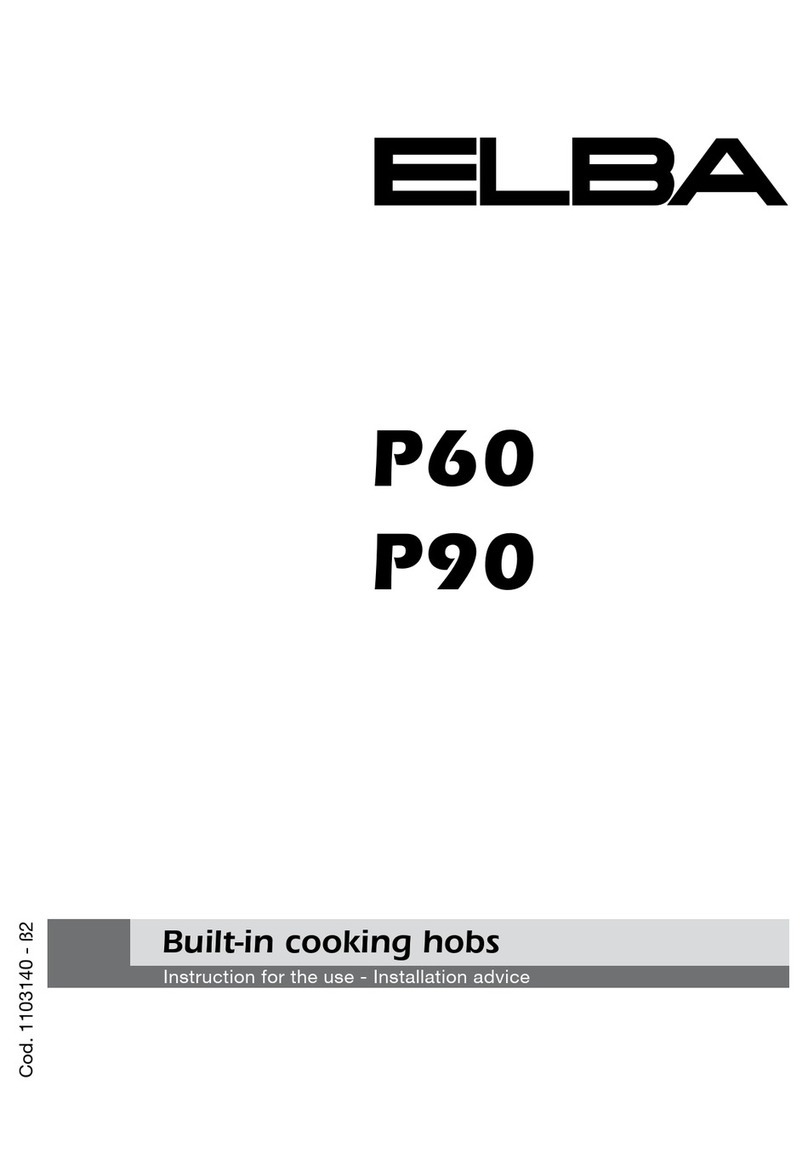
Elba
Elba P60 Instruction for the use - installation advice

AEG
AEG HD634170NB user manual
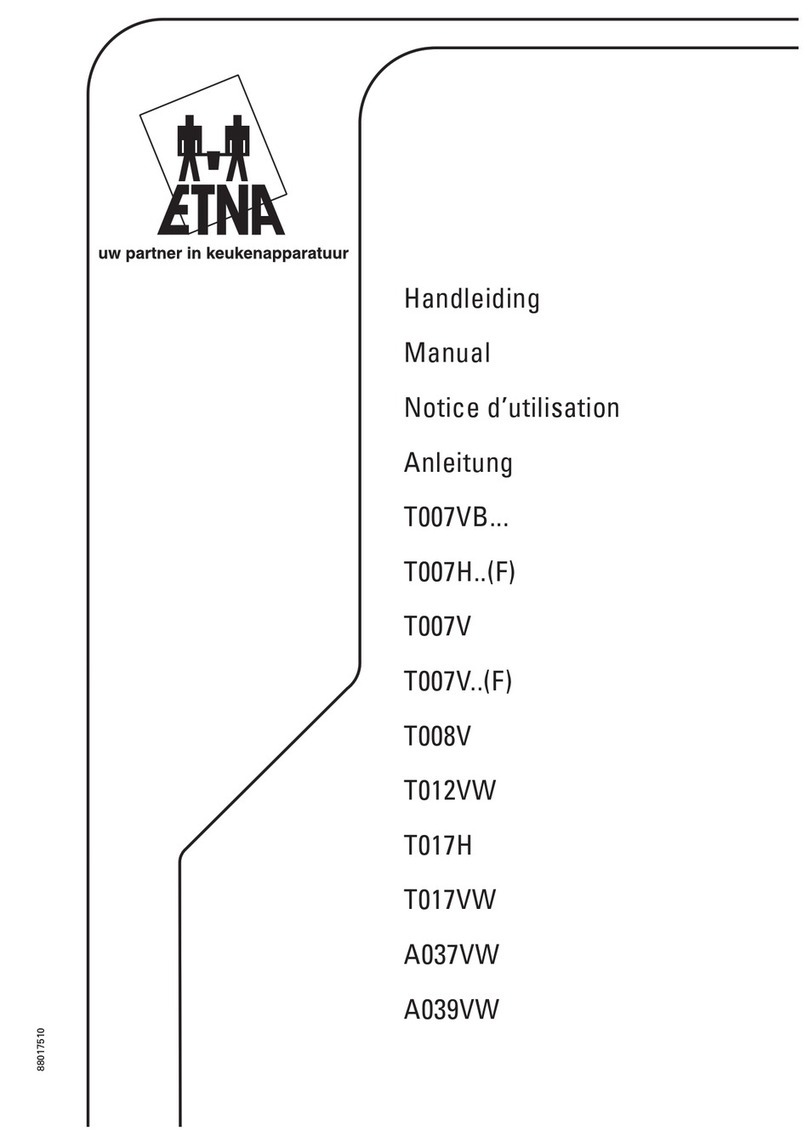
ETNA
ETNA T007VB Series manual
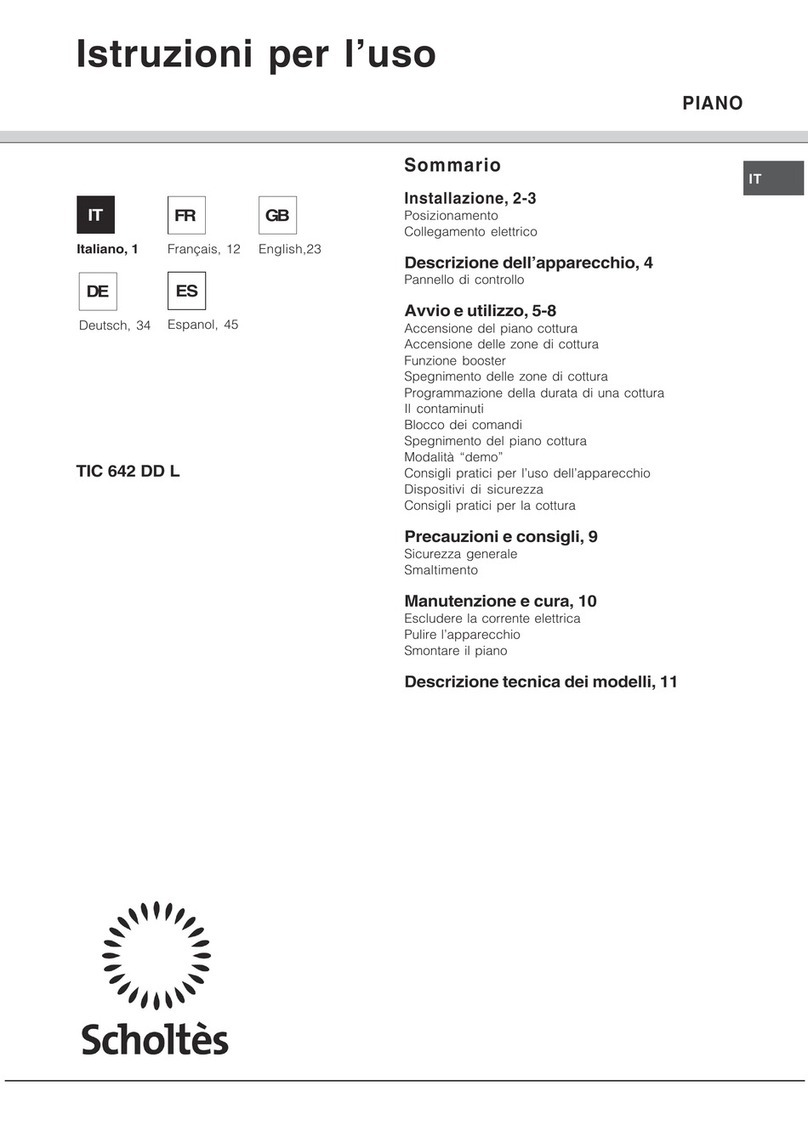
SCHOLTES
SCHOLTES TIC 642 DD L operating instructions

Miele
Miele KM 507 OPERATING AND INSTALLATION Manual

Kuppersbusch
Kuppersbusch GWS 4711.0 M Instructions and advice for the use, installation and maintenance

Electrolux REX
Electrolux REX KTI6500XE user manual



